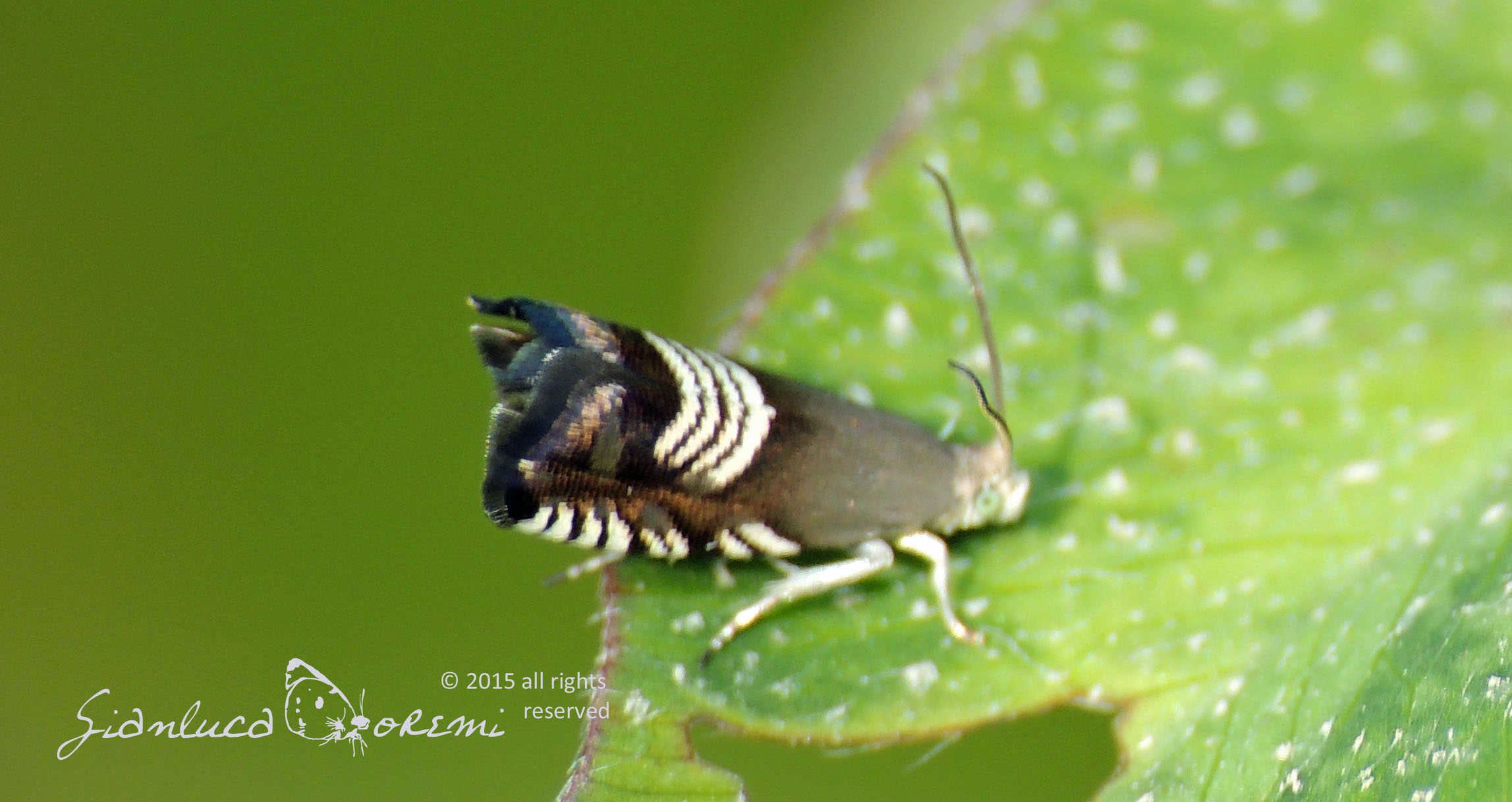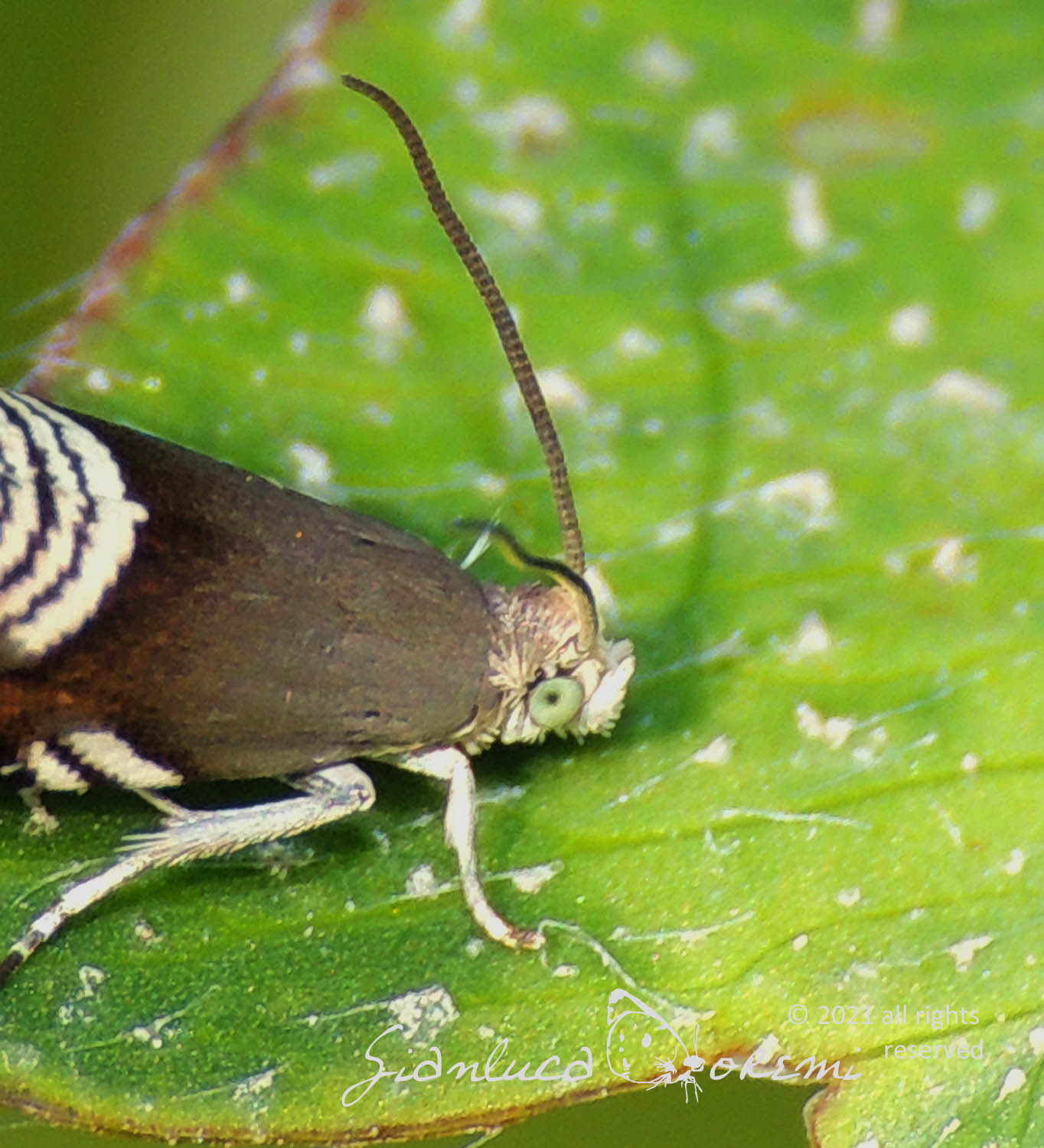Grapholita (Grapholita) compositella
(Fabricius, 1775)
-
 Subfamily: Olethreutinae, Grapholitini
Subfamily: Olethreutinae, Grapholitini -
 Wingspan: 07-10 mm
Wingspan: 07-10 mm -
 Flight period: May - Sep
Flight period: May - Sep -
 Spread: Common
Spread: Common -
 Host plants: Fabaceae
Host plants: Fabaceae
Information
The Grapholita compositella also called Clover Seed Moth is a moth of the Tortricidae family with a wingspan of 07-10 mm.
Present in almost all of Europe with the exception of Bulgaria and Ukraine. *
Its range extends to Asia Minor, Mongolia, China, eastern Russia and North America.
In Italy it is absent from the islands. *
The front wings of the Grapholita compositella have a black-brown background color except for four pairs of well-defined white lines in the costa that end with streaks
metallic bluish color.
A characteristic dorsal spot is also visible which is divided into four parallel white lines surmounted in the basal area by a leaden dash,
the ocellus is represented by a metallic purple streak deriving from the tornus. The basal zone is lighter and fades to a light gray, the same color as the chest.***
The basal zone is lighter and fades to a light gray, the same color as the chest.
The hind wings are white with gray shades in the distal area and along the outer edge of the wing (termen),
with white fringes and gray shades towards the apex with a darker sub-basal line. ***
Sexual dimorphism is not evident but in females the hind wings have a uniform brown shade.
The species is bivoltine; the first generation is visible in May and June and the second generation in August.
They frequent clover fields, lawns, and grassy places, especially on rough chalky or sandy ground where there is an abundance of the host plant.
Males can often be seen numerous, flying quickly over the clover on sunny afternoons.
Females fly into the sunset. The eggs are deposited individually on the leaves of the food plant.
They hatch after 4-6 days. The larva then goes through 5 larval stages.
The larvae of the first generation feed on the stems, undermining upwards from the base;
those of the second generation usually feed in leaves closed by silky threads and on the inflorescences, and sometimes in the pods.
Nymphosis occurs in a whitish silk cocoon among the dry leaves on the ground. ****, *****
The Grapholita compositella larva has a washed-out yellowish brown head; flat prothorax and anal area that vary from light to dark brown. **
the abdomen is creamy-white in color, which gradually acquires a reddish tinge with development and becomes bright red when fully fed.
The chrysalis is initially ocher yellow, then darkens until it becomes brown in color. **
The host plants are different, all belonging to the Fabaceae family, among these we find, Trifolium pratense, Trifolium repens
and probably other species of clover; are also registered on Glycine max (soy),
Medicago sativa (alfalfa), Melilotus sp. (melitoto), Lotus corniculatus (gorse) and other legumes.
* Lepidoptera mundi https://lepidoptera.eu/ - Fauna Europea https://fauna-eu.org/
** Bestimmungshilfe für die in Europa nachgewiesenen Schmetterlingsarten - http://lepiforum.de/
*** (Kuznetsov, 1987)
**** (Bradley et al., 1979)
***** (Bovey 1966)







 EN
EN ITA
ITA
Social and publications